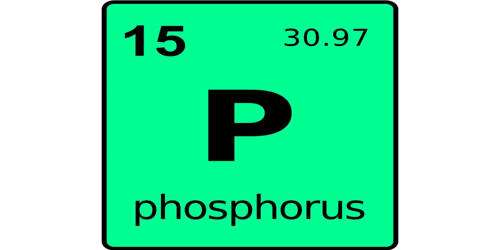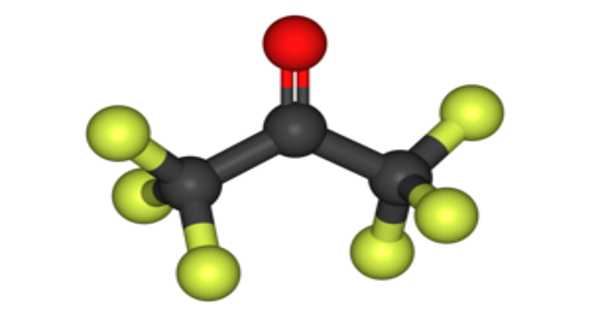Phosphorus is a chemical element with the symbol P and atomic number 15. It is a nonmetallic chemical element of the nitrogen family (Group 15 [Va] of the periodic table) that at room temperature is a colorless, semitransparent, soft, waxy solid that glows in the dark. Elemental phosphorus exists in two major forms, white phosphorus, and red phosphorus, but because it is highly reactive, phosphorus is never found as a free element on Earth. It is a very widely distributed element—12th most abundant in crust earth, to which it contributes about 0.10 weight percent. It has a concentration in the Earth’s crust of about one gram per kilogram (compare copper at about 0.06 grams). In minerals, phosphorus generally occurs as phosphate.
- atomic number: 15
- atomic weight: 30.9738
- melting point (white): 44.1 °C (111.4 °F)
- boiling point (white): 280 °C (536 °F)
- density (white): 1.82 gram/cm3 at 20 °C (68 °F)
- oxidation states: −3, +3, +5
White phosphorus is a waxy, transparent solid. Its melting point is 44.1°C (111°F) and its boiling point is 280°C (536°F). It has a density of 1.88 grams per cubic centimeter. It gives off a beautiful greenish-white glow. It does not dissolve well in water, although it does dissolve in other liquids, such as benzene, chloroform, and carbon disulfide. White phosphorus sometimes appears slightly yellowish because of traces of red phosphorus. White phosphorus combines with oxygen so easily that it catches fire automatically. As a safety precaution, white phosphorus is stored underwater in chemical laboratories.
Phosphorus always occurs as the phosphate ion. The principal combined forms in nature are the phosphate salts. Elemental phosphorus was first isolated as white phosphorus in 1669. The glow of phosphorus is caused by oxidation of the white (but not red) phosphorus — a process now called chemiluminescence. Together with nitrogen, arsenic, antimony, and bismuth, phosphorus is classified as a pnictogen. Phosphorus is part of the nitrogen family along with nitrogen, arsenic, antimony, and bismuth.
Phosphorus is essential for life. Phosphates are a component of DNA, RNA, ATP, and phospholipids. Elemental phosphorus was first isolated from human urine, and bone ash was an important early phosphate source. Phosphate mines contain fossils because phosphate is present in the fossilized deposits of animal remains and excreta. Low phosphate levels are an important limit to growth in some aquatic systems. The vast majority of phosphorus compounds mined are consumed as fertilizers. Today, its most important use is in the manufacture of phosphoric acid (H3PO4). Phosphoric acid, in turn, is used to manufacture fertilizers and a number of other less important products. About 86 percent of phosphate rock comes from North Carolina and Florida. Smaller amounts are also mined in Idaho and Utah. Other major producers of phosphate rock are Morocco, China, Russia, Tunisia, Jordan, and Israel.
















